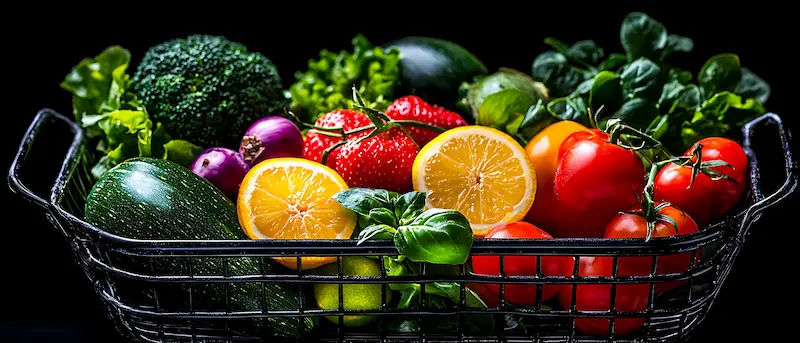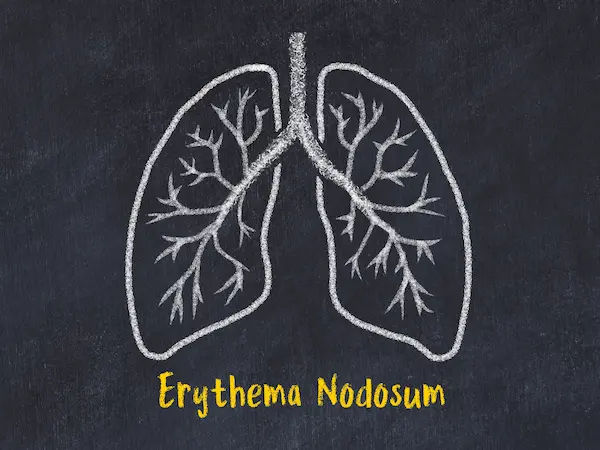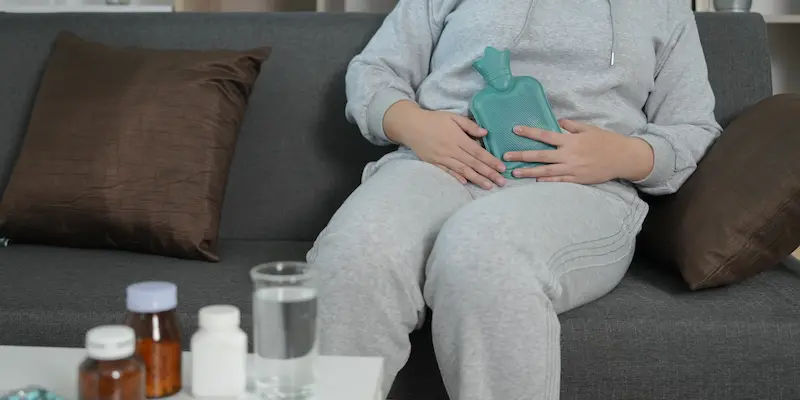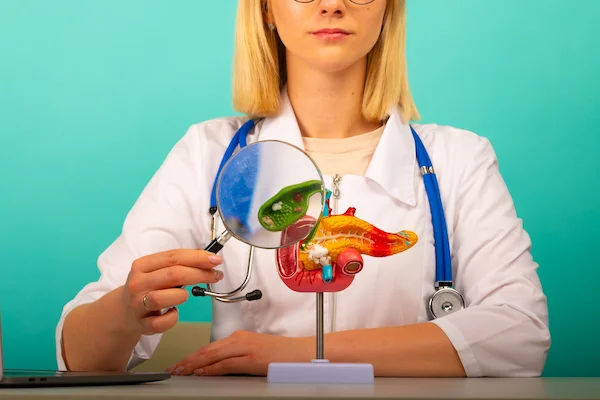How To Reduce Body Swelling?
Learn about the causes, types, and effective ways to reduce body swelling, from diet changes to home remedies. Discover when to seek medical help and the best treatment options to manage swelling effectively.

Written by
Last updated on 3rd Jul, 2025
Swelling in the body, or oedema, occurs when fluid builds up in tissues, leading to a noticeable increase in size in some areas or the entire body. It can be acute or chronic, resulting in sensitivity, pain, and limited movement.
Whether it’s a mild, temporary problem or a symptom of a deeper issue, knowing the causes and how to treat it effectively is key. So, what causes body swelling, and how to fight it? Let’s discuss.
Common Causes of Body Swelling
There are many possible causes of swelling in the body:
Fluid Retention: This is a condition where the body retains excess fluid due to certain factors, including a high sodium diet, hormonal changes during menstruation or pregnancy, and some medical conditions.
Dirt and grime: The foreign material can irritate and cause swelling. The body's immune system responds to this problem, causing more blood and more fluid accumulation at the site of the problem to resolve the problem.
Health Conditions: Chronic conditions like heart failure, kidney disease, liver problems, and venous insufficiency can lead to fluid retention in the tissues.
Types of Swelling
Swelling can happen for different reasons, from fluid retention to underlying medical issues. The major types of swelling are as follows:
Fluid Retention Swelling
Fluid retention is a common cause of swelling in several body parts, most commonly the legs, ankles, and belly. It’s often related to food, such as too much salt in the diet or hormonal changes.
Swelling Due to Inflammation
Inflammation is typically a response to damage or infection. The tissue is also provided with increased blood flow, and fluid seeps into the area to aid healing. Examples that engender inflammatory swelling include fever and ARDS.
Lymphedema
Lymphedema occurs when the lymphatic system is obstructed or damaged, accumulating fluid, typically in the arms or legs. It’s common after lymph node removal or radiation therapy.
Allergic Reaction Swelling
Insect stings, some foods, and medications can expose people to allergens, which trigger the release of histamines and swelling. This swelling often occurs on the face, lips, or throat and can warrant immediate medical attention.
Injury-Related Swelling
When the body is injured — by a sprain, fracture, bruise or other trauma — it swells as part of the healing process. This is due to increased blood flow and fluid in the affected area.
Medical Causes of Body Swelling
Some medical conditions that can cause oedema include:
Heart Failure: Failure of the heart to pump blood can cause fluid to build up in the lungs and limbs.
Kidney Disease: Chronic kidney disease can affect the body's ability to dispose of extra liquid appropriately.
Liver Disease: Diseases such as cirrhosis alter the equations of body fluids enough to result in considerable swelling.
Venous Insufficiency occurs when the veins struggle to pump sufficient blood back to the heart, causing fluid retention around the legs.
Medication-Induced Swelling
Certain medications can cause oedema as a side effect. Common causes include:
Corticosteroids: These anti-inflammatory medications can lead to fluid retention.
Hormone Medications: Contraceptives and hormone replacement therapy can cause swelling.
Nonsteroidal Anti-inflammatory drugs (NSAIDs): These medications can occasionally lead to fluid retention.
Dietary Changes to Reduce Swelling
A low-sodium diet is essential for managing fluid retention. Because sodium makes the body retain water, reducing it can help reduce swelling. The American Heart Association recommends that adults eat less than 2,300 mg of sodium daily. For those with high blood pressure or other risks for heart disease, a lower limit of 1,500 mg may be wise.
Foods That Help Reduce Swelling
Adding these foods to the diet can help combat oedema:
Fruits and Vegetables: Potassium-rich foods (bananas, oranges, spinach) help balance sodium levels and promote fluid excretion. Leafy greens are another good option for hydration because they are full of water.
Whole Grains: Whole grains are a good source of fibre, which can help with digestion and decrease bloating. Brown rice and quinoa are great options.
Herbs and Spices: Ginger and turmeric have anti-inflammatory properties that may help reduce swelling. They can be added to foods or used as teas.
Omega-3 fatty acids: In fatty fish such as salmon and walnuts, omega-3s are known for their anti-inflammatory properties, potentially decreasing overall swelling in the body.
Lifestyle Modifications to Reduce Body Swelling
Lifestyle changes that can help with reducing body swelling:
Regular Physical Activity
Regular exercise encourages circulation and helps to prevent fluid retention. Gentle activities like walking, swimming or cycling boost lymphatic drainage and decrease swelling. Engaging in at least 150 minutes of moderate-intensity aerobic exercise per week, along with strength training on two or more days, supports circulation and reduces swelling.
Importance of Hydration
Hydration is important for the body and overall health. Drinking enough water flushes excess sodium to support kidney function. Unless otherwise instructed by a medical professional, shoot for at least eight 8-ounce glasses of water daily. Staying hydrated also helps keep blood volume and circulation boring, mild, and normal.
Home Remedies for Reducing Body Swelling
Fortunately, simple at-home remedies can treat and control swelling effectively. Here are some proven methods:
Use of Compression Garments
Compression garments (e.g., stockings, sleeves) put pressure on the affected areas and help prevent fluid buildup. They are especially effective for people with chronic venous insufficiency and for people whose legs swell from sitting or standing too long. Compression therapy enhances circulation and alleviates the discomfort related to oedema.
Elevating Affected Limbs
Keeping swollen appendages above the heart helps drain fluid from the area involved. For example, it may be helpful to lay with legs propped up on pillows as this can greatly decrease the swelling in the legs and feet after prolonged periods of standing/sitting.
When to Consult a Doctor
Seek medical attention if any individual is facing below-mentioned problems:
Acute development of significant swelling
Shortness of breath or chest pain
Severe swelling in any area of the body, along with redness or warmth
Other swelling after an injury that could mean a fracture or deep vein thrombosis (DVT)
See a physician quickly, as these symptoms could be a sign of serious underlying issues that need intervention.
Diagnostic Tests for Ongoing Swelling
When swelling persists for several days despite home remedies or occurs with concerning symptoms, healthcare providers recommend diagnostic tests to determine the cause.
Blood tests
Urinalysis
Echocardiograms
Imaging studies (such as ultrasounds)
These tests help determine the cause of oedema, allowing for appropriate treatment.
Medical Treatments for Swelling
If home remedies are insufficient, treatments from a medical professional may reduce swelling and treat its root causes. Here are some common options:
Pharmacological Interventions
Based on the reason for oedema, medical professionals can prescribe treatment choices:
Diuretics: Also Known as “water pills,” cause the kidneys to produce more urine to eliminate excess fluid.
Corticosteroids: Corticosteroids can be used when inflammation is prominent in the cause of swelling, and their effectiveness at reducing inflammation is a significant benefit in these scenarios
Antihistamines: This type of medication may help reduce symptoms of swelling caused by allergic reactions by blocking the release of histamine.
Physical Therapy Options
Chronic swelling from lymphedema or venous insufficiency can be cured with the help of Physical therapy. Therapists use specific movements and techniques to improve circulation and lymphatic drainage and teach patients how to continue self-management.
Preventative Measures for Body Swelling
Recognizing early signs of swelling and scheduling regular checkups ensure timely medical attention when necessary.
Long-Term Lifestyle Adjustments
Long-term lifestyle changes play a key role in preventing recurrent episodes of oedema:
Pursue a low-sodium diet.
Stay Active Regularly.
Stay hydrated.
Don’t stay still for a long time. Move around during long journeys or a long day at the desk, getting up and stretching occasionally.
Conclusion
Many causes of body swelling exist, from dietary to serious medical conditions. Identifying these causes is important for the management process. Clinically, body swelling can be decreased by making some dietary changes, lifestyle changes, home remedies, and seeking medical attention when needed.
When swelling persists despite home remedies or becomes severe, consulting a healthcare provider ensures proper evaluation and treatment.
Consult Top General Physicians
Consult Top General Physicians

Dr. Harshendra Jaiswal
General Physician/ Internal Medicine Specialist
12 Years • MBBS , MD (General medicine)
Kolkata
108 DHANA DHANVANTARI Clinic, Kolkata
(25+ Patients)

Dr Syed Mateen Pasha
General Physician
2 Years • MBBS
Bengaluru
PRESTIGE SHANTHINIKETAN - SOCIETY CLINIC, Bengaluru

Dr. Anand Ravi
General Physician
2 Years • MBBS
Bengaluru
PRESTIGE SHANTHINIKETAN - SOCIETY CLINIC, Bengaluru

Dr. Syed Ismail Ali
General Practitioner
7 Years • MBBS
Hyderabad
Apollo 24|7 Clinic, Hyderabad
Dr. Thandra Ramoji Babu
General Physician/ Internal Medicine Specialist
5 Years • MBBS, DNB(General Medicine)
Warangal
Sai Ram multi-specialty hospital, Warangal




